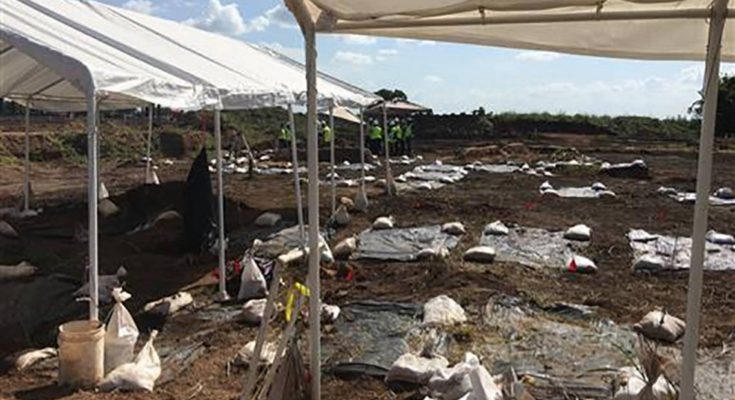Construction workers kept running into human remains and unmarked graves during excavation, in the early stages of a project for Fort Bend’s Independent School District, near Houston, in April.
First, there were a few bodies. That number grew to 79. Then to 95.
Now researchers believe that the site was once a prison camp likely worked by newly freed slaves in the Jim Crow Era, specifically 1878-1910, according to KTRK. A judge granted Fort Bend ISD permission in June to exhume the graves, the station reported.
“All of them are male, except for one female of the ones that have been analyzed so far,” Dr. Catrina Whitley, bioarchaeologist and lead anthropologist for the exhumations and analysis at the James Reese Site, said in a news release. “They’re ranging from 5 feet, 2 inches to 6 feet, 2 inches in height, and anywhere from 14 years of age to 50 to 70 years of age.”
The discoveries in April prompted a halt to the work being done on that tract of land, located at the intersection of University Boulevard and Chatham Avenue in Sugar Land, according to a news release from Fort Bend ISD. Plans for the new technical center have since been amended, and the construction work continues, in areas that do not overlap with the archaeological find.

Chains and other artifacts were also found at the site of what researchers believe is an old prison camp associated with Texas Jim Crow era “convict leasing system.”
During the late 1800s and 1900s, Sugar Land was a sprawling network of sugar cane plantations and prison camps like the one unearthed by the Fort Bend construction project. The town is now a sprawling suburb, but it’s still home to the Imperial Sugar company headquarters.
After the Civil War and the end of slavery in the South, Texas’ “convict-lelasing” system often provided the back-breaking free labor to plantation and farm owners there that was once performed by slaves, according to Rice University researchers. Oftentimes, newly freed slaves were jailed for one of several Jim Crow-Era laws put in place to subjugate blacks after the abolition of slavery, and sent to work on a prison camp like the one the researchers believed has been unearthed in Sugar Land.
The convict leasing system was outlawed in 1910, and prison camps all over the state closed soon afterward.
“It tugs at the heart honestly because these are people and they lived a life,” Fort Bend ISD Superintendent Charles Dupre told the Houston Chronicle. “They lived a hard life and we know that about them.”
This is amazing – researchers know these bodies were placed here before the industrial revolution because the nails are made by hand, not machines. #abc13 https://t.co/QORiXgLFzP pic.twitter.com/ye2AvuDSJM
— Pooja Lodhia (@PoojaOnTV) July 16, 2018
A team of archaeologists and graduate students from Southern Methodist University, the University of Texas and the University of Southern Mississippi have found artifacts, including heavy chains, at the site as well. They know these artifacts date to before the Industrial Revolution because all the nails unearthed at the site appear to have been made by hand, instead of being manufactured.
“Some of these chains, especially the ones that date prior to the Industrial Revolution, some of them have swivels on them, which were more than likely utilized in chain gangs,” Reign Clark, the Archaeological Project Manager at the site, told KHOU.
So far, 48 of the bodies have been exhumed and more than 20 of those have been analyzed completely, officials say. It is not clear how the 95 individuals died.
Once the exhumations and analysis are complete, the technical center’s construction will continue as planned, even on the site of the graves, KHOU reported. ()









